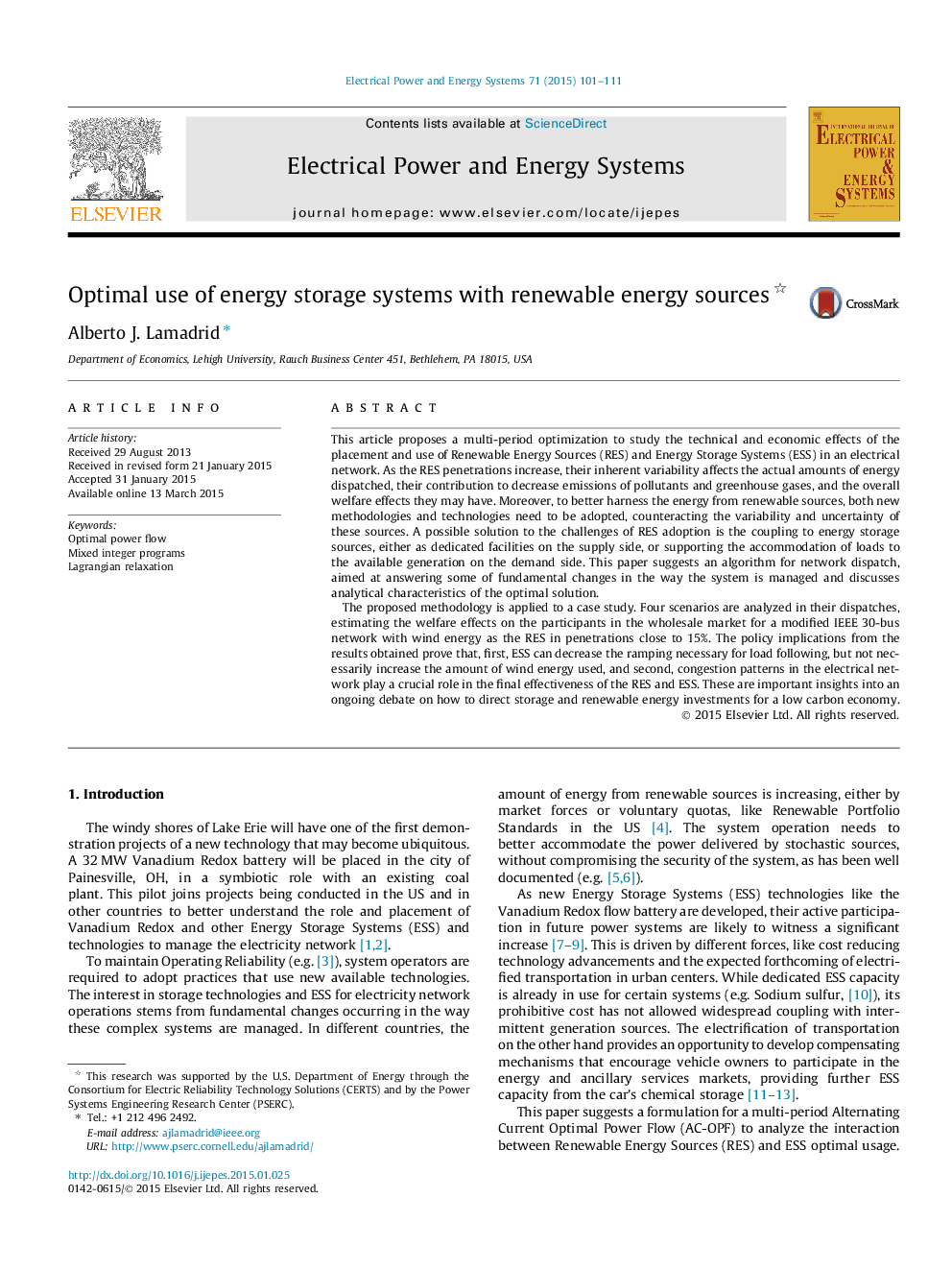| کد مقاله | کد نشریه | سال انتشار | مقاله انگلیسی | نسخه تمام متن |
|---|---|---|---|---|
| 399422 | 1438729 | 2015 | 11 صفحه PDF | دانلود رایگان |
• We model a electricity system with high penetration of Renewable Energy Sources (RES).
• We analyze the optimality conditions when using Energy Storage Systems (ESS).
• We calibrate the network with realistic data for wind penetrations close to 15%.
• The placement of ESS can lead to less RES usage, depending on congestion.
• The benefits to consumers are dependent on the effective MWh of RES dispatched.
This article proposes a multi-period optimization to study the technical and economic effects of the placement and use of Renewable Energy Sources (RES) and Energy Storage Systems (ESS) in an electrical network. As the RES penetrations increase, their inherent variability affects the actual amounts of energy dispatched, their contribution to decrease emissions of pollutants and greenhouse gases, and the overall welfare effects they may have. Moreover, to better harness the energy from renewable sources, both new methodologies and technologies need to be adopted, counteracting the variability and uncertainty of these sources. A possible solution to the challenges of RES adoption is the coupling to energy storage sources, either as dedicated facilities on the supply side, or supporting the accommodation of loads to the available generation on the demand side. This paper suggests an algorithm for network dispatch, aimed at answering some of fundamental changes in the way the system is managed and discusses analytical characteristics of the optimal solution.The proposed methodology is applied to a case study. Four scenarios are analyzed in their dispatches, estimating the welfare effects on the participants in the wholesale market for a modified IEEE 30-bus network with wind energy as the RES in penetrations close to 15%. The policy implications from the results obtained prove that, first, ESS can decrease the ramping necessary for load following, but not necessarily increase the amount of wind energy used, and second, congestion patterns in the electrical network play a crucial role in the final effectiveness of the RES and ESS. These are important insights into an ongoing debate on how to direct storage and renewable energy investments for a low carbon economy.
Figure optionsDownload as PowerPoint slide
Journal: International Journal of Electrical Power & Energy Systems - Volume 71, October 2015, Pages 101–111
